 |
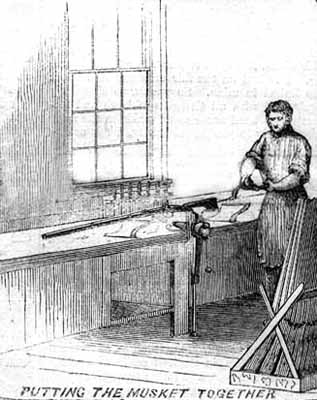 |
| HARPERS WEKLY, SEPTEMBER 21, 1861 |
| In this pre-Civil War image, a stocker is assembling a musket by cutting into the wooden stock with cutting tools so that the metal pieces will fit correctly. The wooden stock held the pieces in the correct functional relation to eachother while allowing the soldier ease of use. |
|
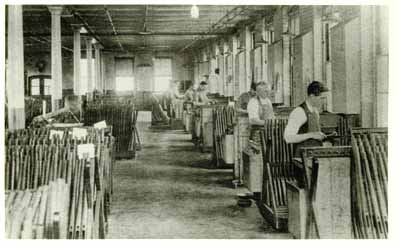 |
| SPRINGFIELD ARMORY NHS, US NPS |
| Not much had changed by the early Twentieth Century. In this photo, stockers may be seen assembling US Model 1903 rifles. |
|
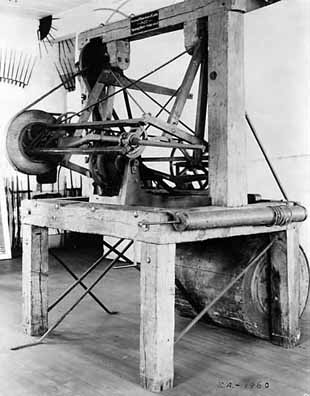 |
| SPRINGFIELD ARMORY NHS, US NPS |
| Beginning about 1822, the Armory produced musket stocks using automatic shaping machines - the first of their kind in the world. Invented by Thomas Blanchard, who spent the 1820's at the Armory supervising the use of about a dozen different types of stock shaping and inletting machines, these machines revolutionized production of interchangeable parts at the Armory and, later, in the industrialized world. |
|
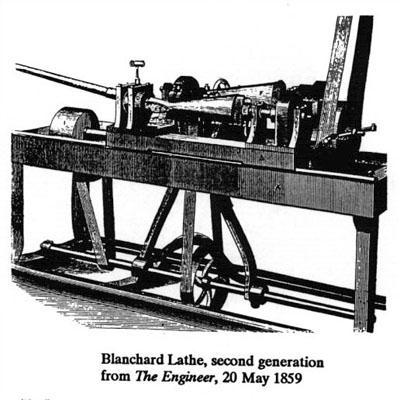 |
| SPRINGFIELD ARMORY NHS, US NPS |
| By the 1850's, Blanchard's stock-shaping lathe, for replicating irregular shapes, was improved by Armory worker Cyrus Buckland. This time, it was a compact iron-framed machine. |
|
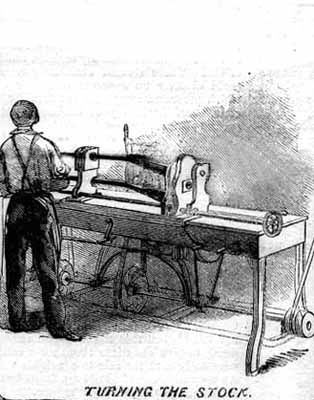 |
| HARPERS WEKLY, SEPTEMBER 21, 1861 |
| In this pre-Civil War image, an Armory worker is shown operating the Blanchard lathe. |
|
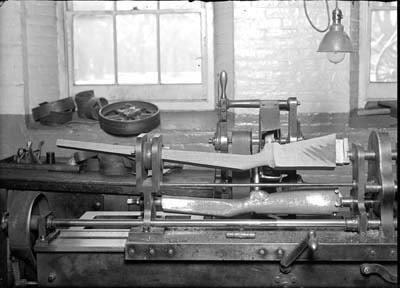 |
| SPRINGFIELD ARMORY NHS, US NPS |
| Not much changed with the Blanchard lathe design for nearly seventy-five years after the Civil War. This photo of a US Model 1903 A1 rifle stock being shaped in the 1930's shows the same machine that was used at the Armory in the 1850's. |
|
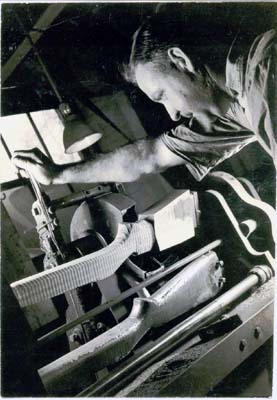 |
| SPRINGFIELD ARMORY NHS, US NPS |
| Here may be observed the Blanchard lathe in use. Note the rough ridges left on the wood surface. These are smoothed off later using hand scrapers and sandpaper. |
|
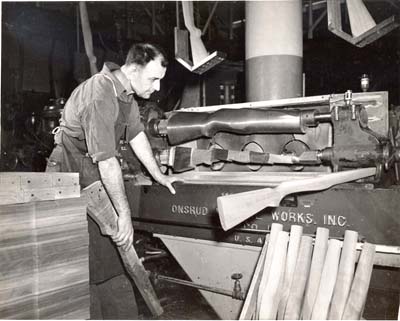 |
| SPRINGFIELD ARMORY NHS, US NPS |
| With investment in the newest machinery to produce the semi-automatic US M1 "Garand" rifle in the late 1930's, newer Blanchard lathes were installed and used. |
|
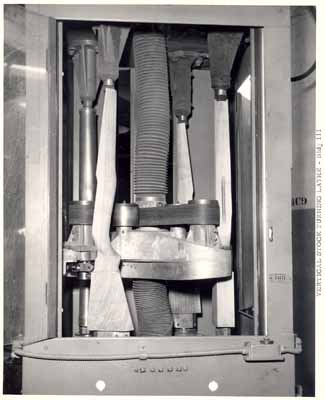 |
| SPRINGFIELD ARMORY NHS, US NPS |
| By the end of WWII, Springfield Armory was using advanced Blanchard lathes that cut and sanded three stocks in one operation. |
|
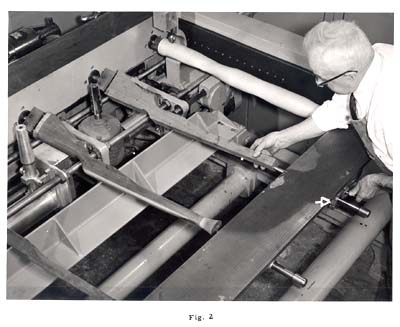 |
| SPRINGFIELD ARMORY NHS, US NPS |
| By the late 1950's, newer Blanchard lathes were incorporated into the production of the US M14 rifle, Springfield Armory's final standard issue service rifle. |
|
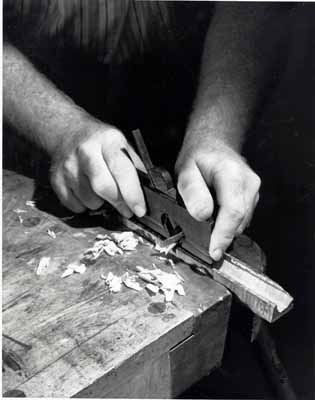 |
| SPRINGFIELD ARMORY NHS, US NPS |
| Before mechanization in the 1820's, each metal component of a musket was fitted into the wooden stock (inletted) by hand. This was a tedious job requiring great skill and experience. |
|
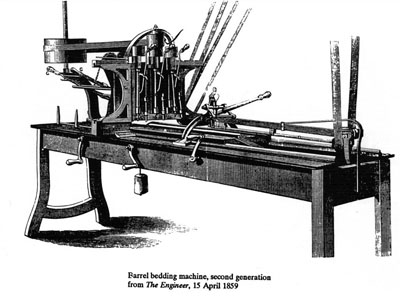 |
| SPRINGFIELD ARMORY NHS, US NPS |
| By the 1830's, the Armory had mechanized barrel inletting. |
|
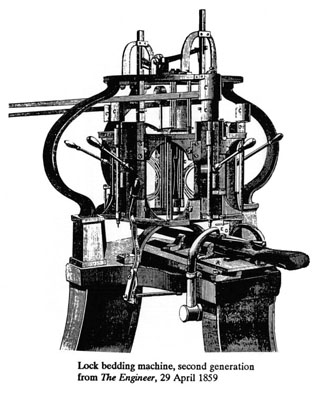 |
| SPRINGFIELD ARMORY NHS, US NPS |
| Here's a lock bedding machine from the 1850's. |
|
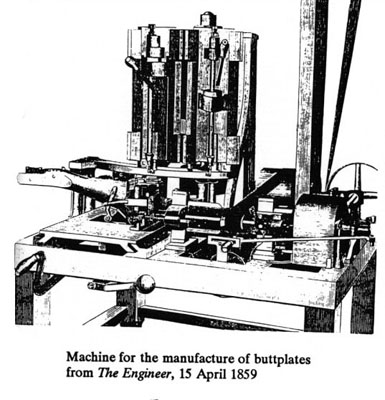 |
| SPRINGFIELD ARMORY NHS, US NPS |
| A buttplate inletting machine is shown here from 1859. |
|
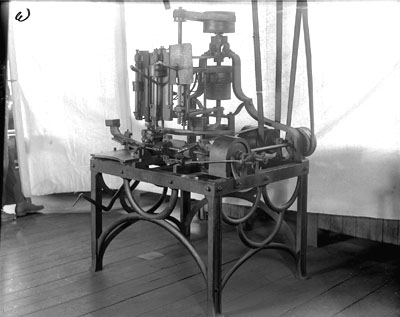 |
| SPRINGFIELD ARMORY NHS, US NPS |
| An Armory buttplate inletting machine in the early Twentieth Century was essentially unchanged from fifty years earlier. |
|
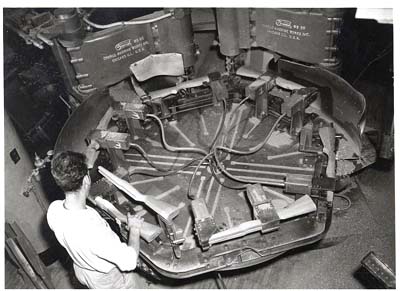 |
| SPRINGFIELD ARMORY NHS, US NPS |
| By WWII, the Armory used advanced stock inletting machines for producing the US M1 "Garand" rifle. It was able to cut and vacuum up the wood chips and dust while cutting many stocks in sequence. |
|
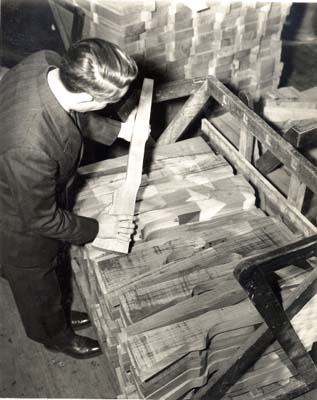 |
| SPRINGFIELD ARMORY NHS, US NPS |
| Only the best heart grain American Black Walnut was used for stocks at Springfield Armory. At first, in the late 1700's, local forests provided all that was needed. By the Civil War, most of it was coming from the mid-Atlantic states. And, by WWII, the mid-west states were the source most often used. |
|
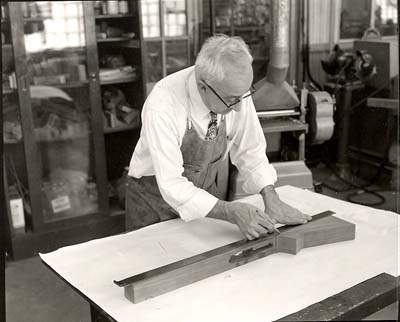 |
| SPRINGFIELD ARMORY NHS, US NPS |
| Some things seem never to change. Here we see an M14 rifle stock blank being aligned by hand prior to being inserted into the Blanchard lathe for shaping. It appears to be a prototype stock, since mass production stock blanks were handled mainly on the shop floor. |
|
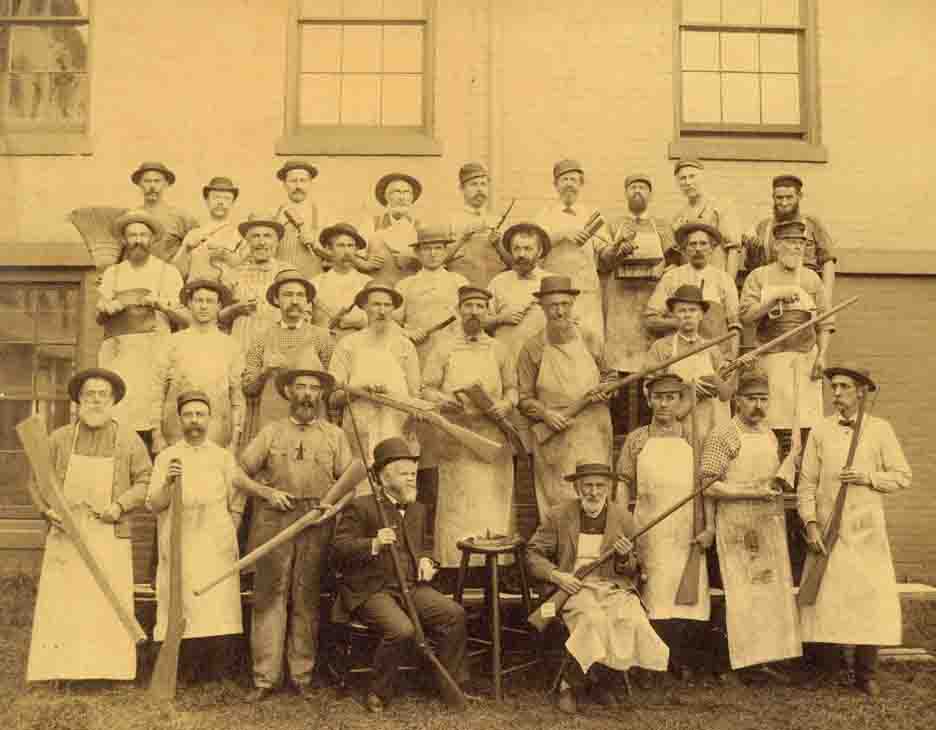 |
| SPRINGFIELD ARMORY NHS, US NPS |
| In this fine group portrait from September 1886, notice how each Armory stocker is dressed in his work outfit and holding his tools & gauges, thereby demonstrating his particular role in producing the rifle stock in a "Division of Labor". The man in the black suit in the foreground is Master Mechanic Samuel W. Porter, with his gauges and stamps on the stool for the final inspection stamping of his initials "S.W.P.". The older man seated next to him is Foreman James Stillman who started working at the Armory in 1835 and died in the mid-1890's. |
|
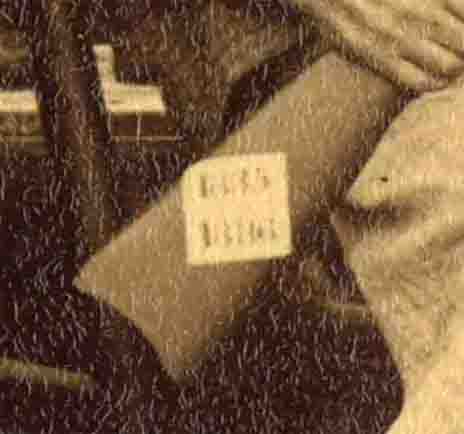 |
| SPRINGFIELD ARMORY NHS, US NPS |
| A close-up of the rectangular paper on the rifle buttstock held by James Stillman reveals the numerals 1835 (the year James Stillman started working at the Stocking Shop) above 1886 (the year of the photo). It appears to commemorate his 51 years of service. |
|
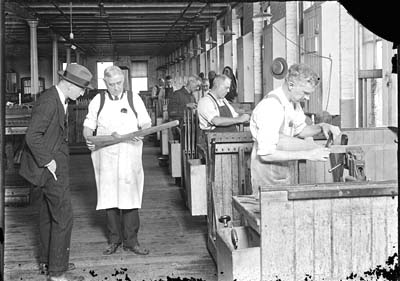 |
| SPRINGFIELD ARMORY NHS, US NPS |
| Mr. Crowel, foreman of the Armory’s stock shop, and his crew working on the cal. .22 international match rifle stocks in the mid-1920’s. |
|
|
|
No comments:
Post a Comment